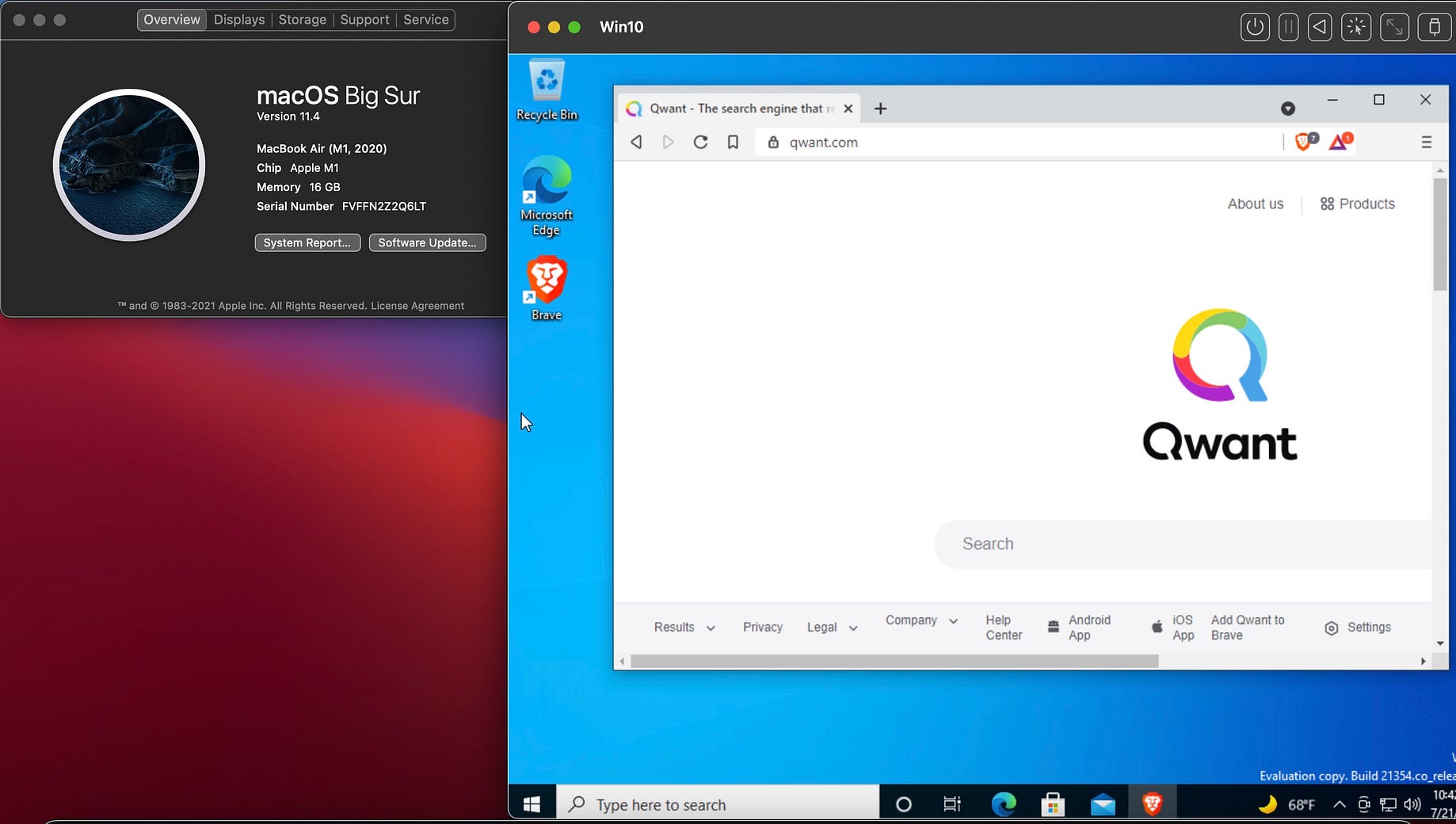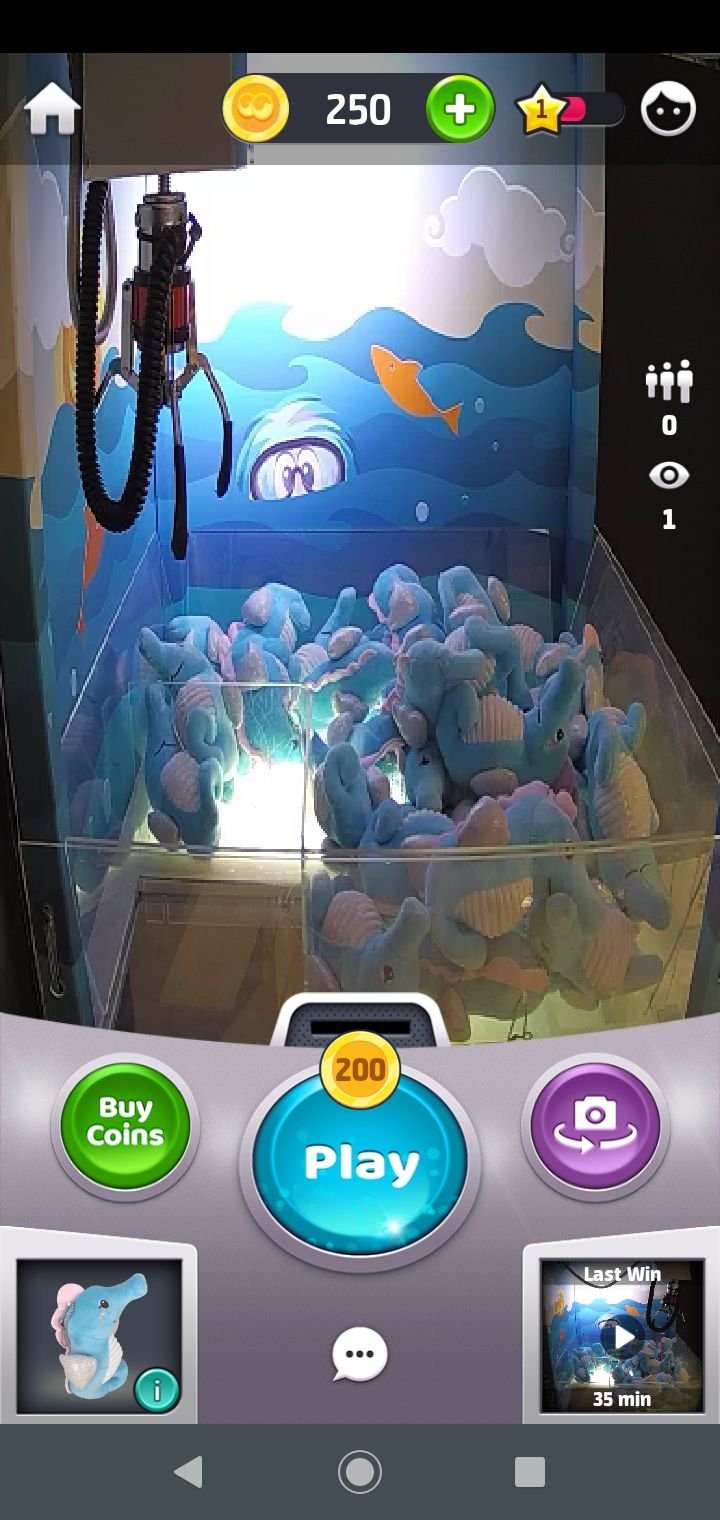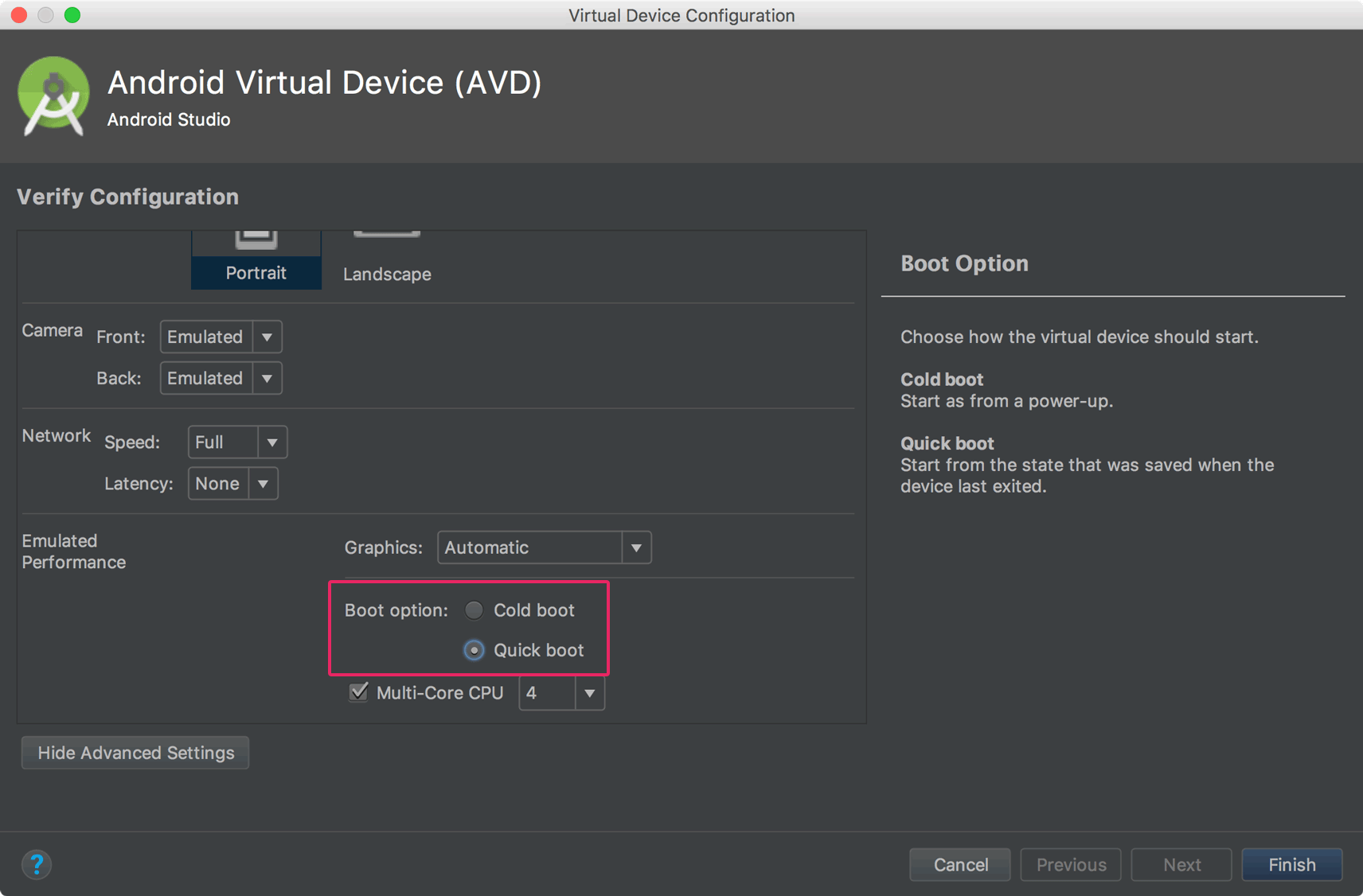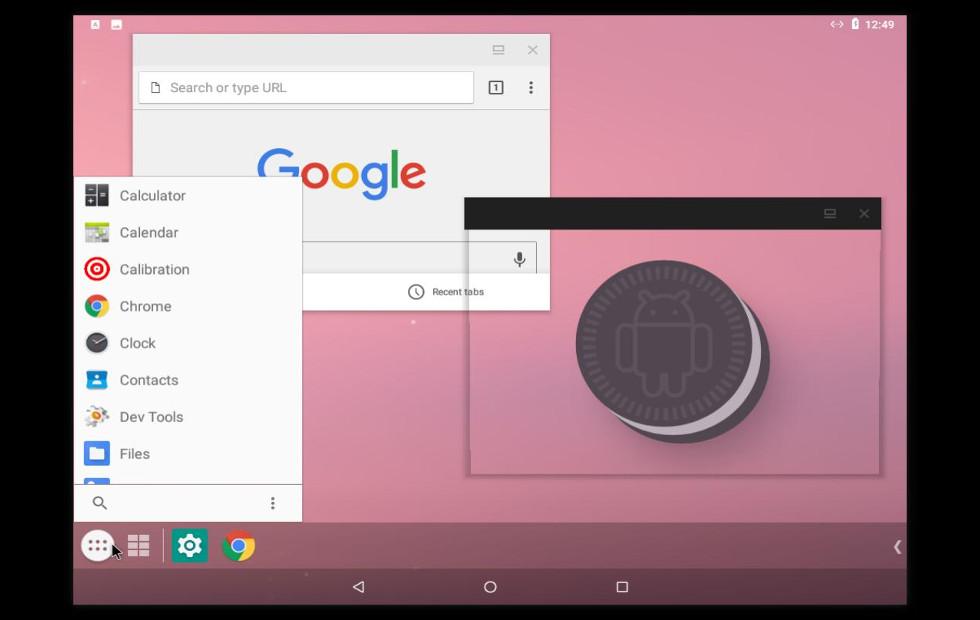We all know there are many Android emulators for Windows which help you get the smartphone experience on your PC. Have you ever wished for an Android emulator for Mac?
The number of free applications on Mac is lower than that of Windows. So, you have to spend a lot of your time for the research. Don’t worry! I have done the research and come up with five of the best Android app players for Mac.
So, are you ready to get deep into the core of this post? Here you go!
Download Ubuntu Linux, Fedora Linux, CentOS. Linux, Debian GNU/Linux, Mint Linux., and Android. virtual machines. Download a ready-to-go Windows 10 virtual machine with Legacy Edge app. Install macOS into a virtual machine from Recovery Partition. Import VMware, VirtualBox, and Hyper-V virtual machines. Whether you are a developer, a gamer or just a person who wants to try out Android on Mac or Windows, you can use any of the emulators we have.
Best Android Emulators for Mac OS
The following are the best Android emulators that I found enticing. You can choose any one of them to run Android apps on your Mac machine.
#1. Bluestacks
I hope you are familiar with this name. This is probably the best Android emulator for Mac 2016. Bluestacks creates a virtual Android OS on your Mac computer.

The software is available for free to download. Once you finish with the installation, you can open it. For the first time, you will have to enter your Google account details to install apps directly from Play Store.
After doing the account setup, you are done! You can install whatever apps you want. Moreover, it also allows you to install apps directly from APK files as well.
#2. Genymotion
If you are looking for the fastest Android emulator for Mac OS, Genymotion can satisfy you. It renders the response once you take an action within the flash of the second. The 3D experience on Genymotion is powered by OpenGL.
You can even create multiple virtual machines if you want. The emulator is fully compatible with ADB that you will not find it difficult to test Android apps on Mac. Unlike most of the other Mac OS Android emulators, this one supports full screen.
Genymotion isn’t a standalone app. So, you need Virtual Box to run this on your Mac machine.
#3. Andyroid
Are you looking for an Android emulator for Mac that offers seamless syncing between your smartphone and virtual Android on your computer?
If you say yes, I can’t help myself from recommending Andy to you. It is true that Bluestacks can offer the same facility. But you will have to install a specific add-on to enable the same.

Another best thing about Andy is its ability to convert your phone as a joystick to play games on the Mac. Just like any other Android emulator, you should provide your Google account details on the first launch of Andy.
#4. Xamarine Android Player for Mac
Next up in this list of best Android emulators for Mac is Xamarine. It is not a full-fledged emulator, but an app player only.
You can install the app player within no time and start running apps you want. As Xamarine supports OpenGL, the working of it is almost same as that of Genymotion.
And, you can’t find any stutter or lag while working with it as well. The size of the app player is comparatively lower as well.
#5. Droid4x
Most of us look for an Android emulator for Mac purely because of our urge to play high-end games. If you have a low-end or old device, you can’t run graphically intense games on it.
So the best solution is to install an Android emulator. Does the above situation sound familiar to you? Then, you must download Droid4x as it is the best gaming Android emulator for Mac.
Wrapping Up
So, you have got five best Android emulators for Mac now.
What do you think? Have you ever used any of them? In case you haven’t, don’t hesitate to try them.
Windows, macOS – which one do you want to use today? On a traditional setup, you’re stuck with one or the other. But with virtual box, you actually have macOS on a Windows PC.
It’s the freedom that computer users have enjoyed with Linux and other operating systems.
But Apple has made it difficult to install their operating system on anything other than their own hardware. All of that is changing, and Virtual Box is responsible for it and the rise of the Hackintosh.
This full-featured Andy OS can run on any computer including the Mac. It bridges the gap between a desktop and mobile computing. With it you stay updated with the latest Android OS feature upgrades. A perfect solution for running Android apps on Mac OS X. Better graphics and Android gaming is possible on your Mac with this software. Android-x86 Project – Run Android on Your PC. When it comes to run the latest Android OS for pc.
New to hackintosh? Learn more about it in our what is hackintosh? overview.
Before we install OS X, we’ll need to set up VirtualBox so the OS X install disc can boot correctly. Here’s what you need to do: Step 1: Launch VirtualBox and click the New button. Give your new virtual machine a name (I just called it “Mac OS X”) and set the operating system to “Mac OS X Server (64-bit)”. Oct 07, 2018 See: How to install Bliss os X86 on PC and VirtualBox. OpenThos Android OS. OpenThos is the Android-based operating system that can provide a full-fledged Android X86 experience on PC with additional apps and functions.
Note: A lot of people will be able to get a mac virtual machine one Windows running smoothly, but sound doesn’t seem to work well. That’s really not an issue because you’ll still be able to access all of your apps and software.
I also recommend that you have access to a real Mac. You might be able to find some distributions of the High Sierra ISO online, but there is always a risk when downloading from an unofficial source. Instead, borrow a Mac from a friend, or use your own and download the High Sierra OS from the App Store.
Check out our high sierra installation guide for hackintosh
Everything You Need to Get Started with Installing macOS on VirtualBox
Before we go through the steps on how to install macOS on Virtual Box, let’s get everything together that you’ll need to get started.
- Open up your Mac
- Go to the App Store
- Type in “High Sierra”
You’ll want to search for your desired operating system (we’ll be using High Sierra), and Download it.

Note: You’ll need a decent computer to be able to run Virtual Box. Your computer will need to meet these minimum requirements:
- Dual core processor
- 4GB Ram or higher
- 64-bit
If your computer doesn’t meet these requirements, you won’t be able to run macOS properly. You’ll be able to download VirtualBox from the official website. I’m not going to go through the installation process, as the website will have all of the information you need to be able to install VirtualBox.
I do recommend that you read all of the documentation and ask any questions that you have in the community section of the website.
VirtualBox 6.0 was just released, so it’s definitely a great time to get started with your own macOS.
Extract macOS Sierra
Make sure you’ve downloaded High Sierra, and then you’ll want to run a few commands from your terminal . You’ll be able to open the terminal at: Applications > Utilities > Terminal. Once inside of the terminal, you’ll want to run the following commands:
Go to your desktop and rename the file, removing the “.cdr” extension. You need this extension to read “.iso” for it to work properly.
You’ve successfully created your own ISO file so that you can bootup your macOS.
The next step is to copy the file over to your Windows machine (using a large USB drive seems to work best). This file will be mounted in your virtual machine later on in the article, so it’s very important that this step is completed successfully.
Creating a mac Virtual Machine on Windows
You’ll want to create a virtual machine, and this is really easy. You’ll open up VirtualBox and click New. You’ll want to have the following parameters selected or entered before clicking Next.
- Name: High Sierra
- Type: Mac OS X
- Version: Mac OS X (64-bit)
Pay attention when selecting the version because you may find that High Sierra is offered as a version when you go to install it. But if it’s not, you can just choose the settings I listed above and they should work fine.
You’ll then be proceeding through all of the settings.
When you come up to the RAM setting, you’ll want to be generous. VirtualBox requires a minimum of 4GB or RAM to run, but the more the better.
Why?
You’ll want to provide at least 4GB to your macOS, or 4096MB to be precise. A general rule of thumb is that if you can spare it, supply more RAM to your virtual machine. RAM will allow the operating system to put more information into memory and retrieve it faster.
For better overall performance, supply as much RAM as you can.
The next steps are also important, and they’ll include:
- Hard Disk: Choose the “Create a virtual hard disk now” setting.
- Choose VDI when choosing the hard disk type.
- Choose Fixed Size instead of Dynamic for added speed.
- Set the size of the drive to at least 25GB.
You’ll now have your virtual machine using the RAM and disk space properly, and you’ll have to work your way through a few screen prompts before having everything setup properly.
Configuring Your VirtualBox to Run macOS High Sierra
We’ve made a lot of progress so far, and now it’s time to configure your virtual machine properly. You’ll see in the main window of VirtualBox that “High Sierra” is listed. Click on this and then click on the “Settings” button.
You’ll want to go to “System” and make sure that the following are unchecked on the Motherboard tab:
- Floppy
- Network
Click on the Processor tab and make sure that you have 2 or more CPUs set for your virtual machine.
The next few settings are rather simple:
- Display: Video Memory with a minimum of 128MB
- Storage: Click “Empty” and then click on the CD at the top right. Choose your High Sierra ISO file
Now you’ll need to click “Ok,” and save all of the changes you’ve made. Close out your VirtualBox now.
Apple is very strict on the system that their operating system runs on, so it’s very important that you do your best to configure your virtual machine in such a way that it tricks the installer to thinking you’re on a retail machine.
We’ll now be going into the Windowscommand prompt.
You’ll do this by:
- Clicking the Start Menu
- Typing “Command Prompt”
- Right-clicking on the Command Prompt desktop app
- Choosing Run as administrator
It’s very important to follow all of the following command prompts exactly. Your goal is to run each command, one by one, hitting the Enter button and waiting for the command to complete successfully.
Remember that VirtualBox needs to be closed before running these commands, or it won’t work properly.
You have to make sure that the virtual machine is properly named “High Sierra” for this method to work. If not, you’ll be able to go back and make changes to the name to get everything to work properly.
Once all of the commands are completed, and there are no errors, you’ll then be able to open up your VirtualBox and get macOS High Sierra installed properly on VirtualBox.
It’s a long process, but we’re almost done with your installation.
Running VirtualBox and the macOS Installer
You’ve almost learned how to install macOS on VirtualBox entirely, and we’re on the home stretch. You’ll want to open up your VirtualBox and then click on your virtual machine that you set up earlier.
Now, click “Start.”
There will be a lot of information displayed on the screen as everything starts running. I recommend stepping away from the machine and letting it run for a few minutes before coming back. Some errors can hang for 5 minutes or longer.
If you’ve done everything properly, you can be confident that the installer will boot properly.
You’ll eventually be presented with the option to pick a Language. If you’ve reached this point, you’re doing very well and are almost ready to run your macOS.
The next steps can be followed:
- Choose your desired language, and click
- Click “Disk Utility” and then
- Click “View” and then “Show All Devices.”
- Click on your empty virtual drive that has been setup and click “Erase.”
- Choose the following settings:
- Name: Macintosh HD
- Format: Mac OS Extended (Journaled)
- Scheme: GUID Partition Map
- Click “Erase” and close Disk Utility when the process is complete.
- Click “Reinstall macOS.”
- Click “Continue.”
You’ll come up to one point where you’ll be asked to choose a hard drive, and you’ll want to select the Macintosh HD partition that you just created with the Disk Utility.
We’ve successfully copied all of the files on the virtual machine, but we’re not done just yet.
Exit your virtual machine and then go back to your virtual machine’s settings. You’ll need to change up your Storage settings. Click on your ISO for High Sierra in the “Storage Tree.” You’ll click that CD icon just like we did earlier and then choose “Remove Disk from Virtual Disk.”
You need to do this to unlink the ISO from your virtual machine.
Start up your virtual machine and you should come across a black screen with the EFI Internal Shell. You’ll want to look for FS1. If this is listed in yellow, click on the virtual machine and then type fs1: and hit the Enter button.
You should be in the fs1 directory.
Type in the following commands:
- cd “macOS Install Data”
- cd “Locked Files”
- cd “Boot Files”
Now we’ll run the installer by running: boot.efi and hitting enter.
If everything goes well, you’ll come across a graphical installer and will just have to work through the prompts. The virtual machine will reboot eventually and then you’ll need to go through the settings and the rest of the setup process.
Soon enough, you’ll be right inside of macOS, where you’ll be able to start using your mac virtual machine on Windows.
Having a virtualbox mac OS is the easiest method of using mac as and when you need it. In addition, using virtualbox is far less complicated than the dual boot hackintosh method we have looked at previously.
Сontents
- How to connect iPhone to VirtualBox
- Alternative solution: USB redirector software
Android Virtualbox Mac Os X
How to connect iPhone to VirtualBox
So, you decided to connect your iPhone to VirtualBox guest but found that it is not as simple as just plugging the device into your host machine once your VM is running. The good news: in this article, I’ll tell you about an easy way to set up USB passthrough in VirtualBox using either the native method or dedicated software.
The native method to provide access to an iPhone for a VirtualBox Guest

There are many reasons why you might need to use your iPhone with VirtualBox. Whether you are going to back up some data, or transfer files the first thing you should do is install the latest version of VirtualBox and its guest additions on a guest operating system running on Linux or Windows. Next, you need to install the VirtualBox extension pack.
Now the iPhone appears in the Device Manager of the guest OS, and you can easily transfer any data in and out over a VirtualBox to iPhone connection.
Note: You can establish a connection to your iPhone from one guest OS at a time.
Alternative solution: efficient USB redirector software
As we know, many virtualization apps do not provide USB support out of the box. If VirtualBox does not recognize your USB connection, you can resort to the help of a dedicated software tool called USB Network Gate. This solution allows redirecting an iPhone, iPad or any other USB device to virtually any VM. It works perfectly well with VirtualBox, VMWare, Hyper-V, and others.
USB Redirection software uses advanced port redirection technology that allows forwarding USB peripherals to a virtual environment. The software lets you establish secure connections to remote devices over LAN and the Internet.
In order to implement USB redirection to VirtualBox with no limitations, just do the following:
Now, the device will be connected to your VirtualBox as though you physically attached it to the guest OS.
Video Tutorial to redirect iPhone to VirtualBox
Android Virtual Machine Manager
Virtualbox Mac Download
Android For Virtualbox Mac Os 10.10
The advantages of connecting an iPhone to VirtualBox with dedicated software
Virtualbox Mac Os X Vbox Download
Android For Virtualbox Mac Os Windows 7
Windows 10 Virtual Machine Android
If you are looking for a way to enable VirtualBox for iPhone connectivity, I’d recommend you to entrust this task to a solution that is proven to be efficient in redirecting USB devices to virtual machines. USB Network Gate by Electronic Team, Inc. is known for its reliability and stability. Connecting your iPhone to VirtualBox with this dedicated software has many advantages. These include:
Android For Virtualbox Mac Os On Linux
Run Virtual Machine On Android
- The simplicity of use. You can share your iPhone and connect to it from a guest OS with nothing more than a couple of clicks.
- Advanced encryption algorithm. You can be sure that the connection you establish between an iPhone and a virtual machine is reliably protected from unauthorized access.
- The speed of data transfer. You’ll be able to work with a remote device just as if it were a physical connection.
- Cross-platform compatibility. USB Network Gate gives you a way to create cross-platform connections between Windows, Linux, and Mac platforms.
- Any virtual machines. This tool will let you share USB devices with not only VirtualBox but many other virtualization apps, etc.